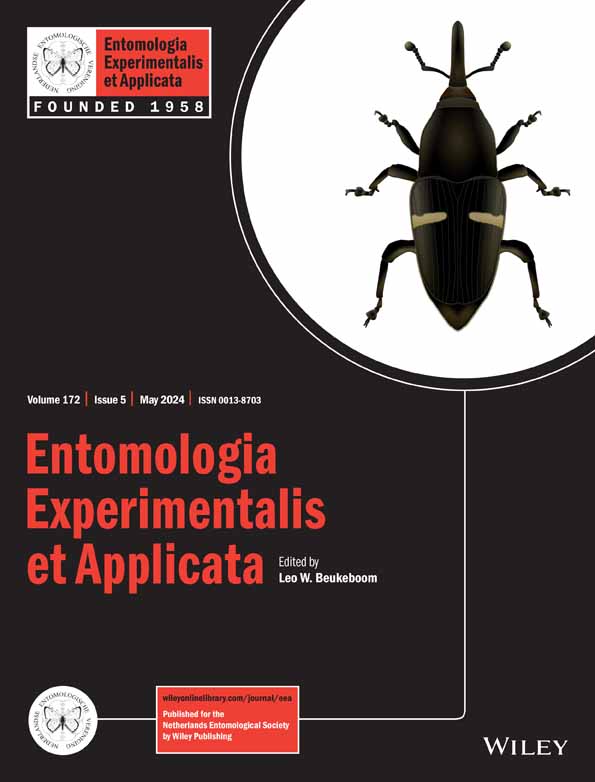Ver ítem
- xmlui.general.dspace_homeCentros e Institutos de InvestigaciónCICVyA. Centro de Investigación en Ciencias Veterinarias y AgronómicasInstituto de GenéticaArtículos científicosxmlui.ArtifactBrowser.ItemViewer.trail
- Inicio
- Centros e Institutos de Investigación
- CICVyA. Centro de Investigación en Ciencias Veterinarias y Agronómicas
- Instituto de Genética
- Artículos científicos
- Ver ítem
Associative learning of visual cues in the fruit fly parasitoid Diachasmimorpha longicaudata : temporal dynamics and potential consequences on females' fitness
Resumen
Diachasmimorpha longicaudata (Ashmead) (Hymenoptera: Braconidae) is a generalist larval-prepupal parasitoid of true fruit flies (Diptera: Tephritidae). During host-seeking, females use visual information to locate the habitat of the host (fruit of various species). Previous studies have shown that females associate the colour of the host habitat with the availability of hosts through associative learning. In this study, we aimed to understand how this
[ver mas...]
Diachasmimorpha longicaudata (Ashmead) (Hymenoptera: Braconidae) is a generalist larval-prepupal parasitoid of true fruit flies (Diptera: Tephritidae). During host-seeking, females use visual information to locate the habitat of the host (fruit of various species). Previous studies have shown that females associate the colour of the host habitat with the availability of hosts through associative learning. In this study, we aimed to understand how this process is reinforced as the number of positive experiences increases and also how stable this association is, when the positive experiences cease. Additionally, under the hypothesis that associative learning has adaptive value, we evaluated the benefits of learning in two contexts: one in which host larvae are still associated with the learned colour and one where larvae are associated with a different colour. Repeated exposure to the unconditional stimulus for 1, 3, 5, and 7 consecutive training bouts influenced the preference response, as the percentage of females that preferred the stimulus increases with the number of training sessions. This preference seems to be reversible, as we found that the memory duration declines as time since the last training bout increased. The results obtained regarding the benefits of learning showed that females that learned a particular colour associated with the host, spent more time in that colour, made more oviposition attempts, and produced more offspring compared to females that learned a colour that is no longer associated with the host. This suggests that learning should not be fixed, and females would benefit from adjusting their behaviour to host availability. Such colour would allow females to find their host more efficiently, by associating cues that lead to host finding but also modifying their response when the cues are no longer associated with a reward, which seems a reasonable strategy for parasitoids of polyphagous hosts infesting ephemeral and changing habitats, such as fruit of different species.
[Cerrar]

Fuente
Entomologia Experimentalis et Applicata : 1-9 (First published: 30 January 2024)
Fecha
2024-01
Editorial
Wiley
ISSN
1570-7458
0013-8703
0013-8703
Documentos Relacionados
Formato
pdf
Tipo de documento
artículo
Proyectos
(ver más)
INTA/2019-PD-E4-I079-001, Genética, genómica y ecología de insectos de importancia agronómica como insumo para el desarrollo de estrategias sustentables de control plagas
INTA/2019-PE-E4-I074-001, Manejo Integrado de Plagas
Palabras Claves
Derechos de acceso
Restringido
 Excepto donde se diga explicitamente, este item se publica bajo la siguiente descripción: Creative Commons Attribution-NonCommercial-ShareAlike 2.5 Unported (CC BY-NC-SA 2.5)
Excepto donde se diga explicitamente, este item se publica bajo la siguiente descripción: Creative Commons Attribution-NonCommercial-ShareAlike 2.5 Unported (CC BY-NC-SA 2.5)


